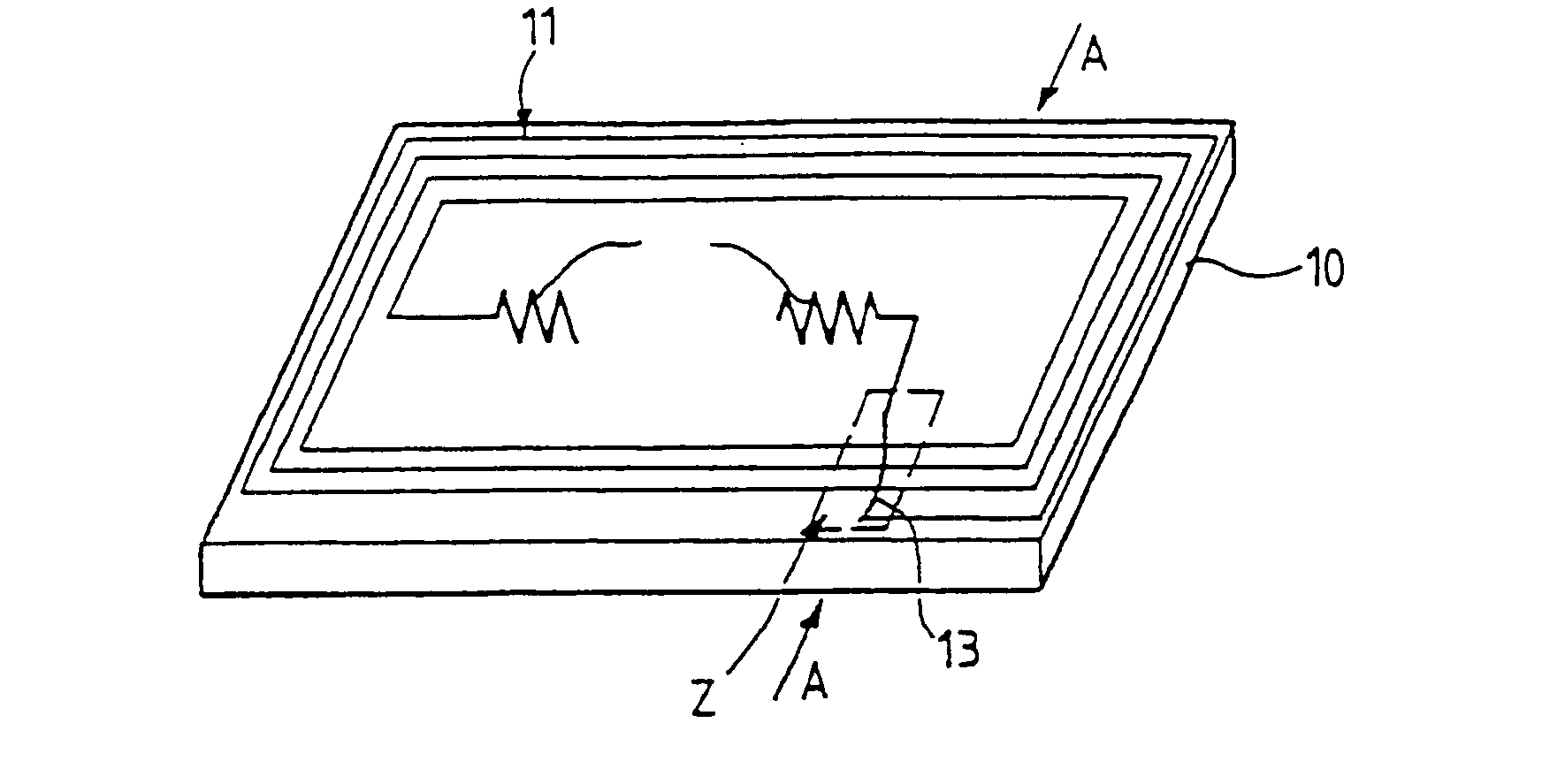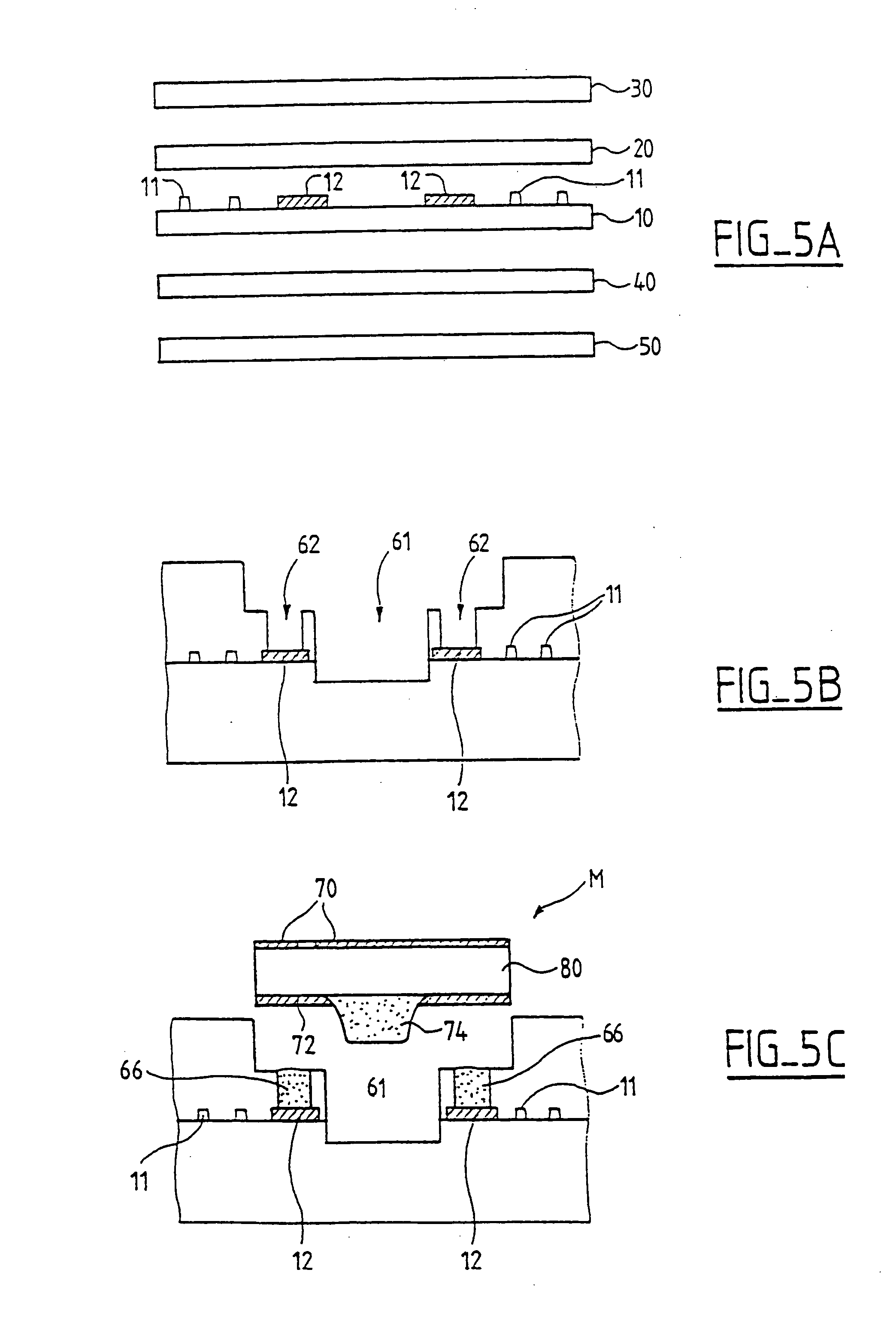Method for making smart cards capable of operating with and without contact
a technology of smart cards and contacts, applied in the direction of record carriers used with machines, printing, instruments, etc., can solve the problems of precision and reliability, severe manufacturing constraints, and low thickness of cards (800 m) that are a major constraint, so as to simplify and accelerate the manufacturing method, the effect of minimising the stress on the interconnection
- Summary
- Abstract
- Description
- Claims
- Application Information
AI Technical Summary
Benefits of technology
Problems solved by technology
Method used
Image
Examples
Embodiment Construction
[0042] In general, mixed smart cards will be produced by the bonding (hot or cold lamination) of foils of plastic material in which the antenna conductor has been inserted or interposed; then by forming a cavity in the assembled foils, between the connection pads provided at the ends of the antenna conductor, in order to create a space intended to accommodate the electronic module with integrated circuit; and by installing this module so that two conductive pads of the module come into electrical contact with the connection pads of the antenna conductor, either directly or, more frequently, through the intermediary of a conductive linking element.
[0043]FIG. 1 shows a first method of producing an antenna 11 comprising at least two turns and intended to be enclosed in the body of a contactless smart card. Two connection pads 12 are provided at the ends of the antenna filament 11. An important stage in a manufacturing method of such a contactless smart card consists in producing the a...
PUM
| Property | Measurement | Unit |
|---|---|---|
| thick | aaaaa | aaaaa |
| thick | aaaaa | aaaaa |
| thick | aaaaa | aaaaa |
Abstract
Description
Claims
Application Information
 Login to View More
Login to View More - R&D
- Intellectual Property
- Life Sciences
- Materials
- Tech Scout
- Unparalleled Data Quality
- Higher Quality Content
- 60% Fewer Hallucinations
Browse by: Latest US Patents, China's latest patents, Technical Efficacy Thesaurus, Application Domain, Technology Topic, Popular Technical Reports.
© 2025 PatSnap. All rights reserved.Legal|Privacy policy|Modern Slavery Act Transparency Statement|Sitemap|About US| Contact US: help@patsnap.com



